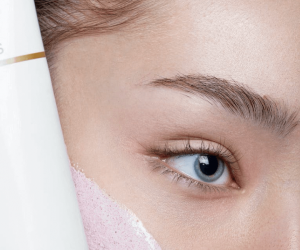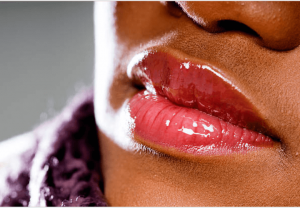Almond skin tone refers to a particular shade of skin that closely resembles that of almonds in terms of its hue and shade, usually described as light to medium tanned with warm undertones. The skin of this color tone can often be found among those from various ethnic groups, including East Asian, South Asian, Mediterranean, or Middle Eastern heritages.
Almond skin is prized across cultures as an indicator of beauty, elegance, and health. Noticing and appreciating different skin tones – such as almond skin tones – promotes inclusivity while celebrating diversity and celebrates diversity as beauty.
Understanding the characteristics and significance of almond skin is crucial for those with this complexion to select an effective skincare routine and makeup techniques that will accentuate their natural beauty

Definition of Almond Skin Tone
Almond skin refers to a specific shade of brown skin resembling almonds’ colors in terms of hue. It typically falls somewhere between medium to light brown complexion with warm undertones.
Characteristics of Almond Skin
Almond skin is defined by its warm and rich hue, often featuring golden or olive tones to provide an inviting natural radiance. Individuals with almond complexion typically possess medium to light brown complexion, though this could vary slightly based on factors like sun exposure and ethnicity.
Almond skin tones come in various shades and undertones
- Light almond skin tone: Light almond skin boasts delicate and airy qualities that span an expansive spectrum. From the fairest alabaster hues to subtler touches of warmth, light almond skin tones exhibit distinctive charm that sets them apart. Recognizing these variations requires appreciating how soft undertones add depth to this skin complexion.
- Medium Almond Skin Tone: Medium almond tone stands out with its delicate combination of golden and olive undertones, creating an eye-catching radiant complexion with rich, deep tones that captivate those who admire it. Celebrating its golden undertones makes medium almond skin tone all the more captivating
- Dark Almond Skin Tone: These are elegant and attractive. It exudes depth and seductive beauty, boasting rich brown hues ranging from warm mahogany to deep ebony hues – an effortlessly magnetic quality possessed by those displaying them. Therefore we must recognize this skin tone’s depth and intensity to celebrate their undeniable allure and give due recognition of this magnificent trait of beauty.
Significance of Almond Skin
Almond tone holds great meaning not only because of its distinct beauty but also because it represents diversity within the brown spectrum. Therefore, we should celebrate and embrace the almond’s unique beauty as an indicator of diversity within society and culture at large.
Understanding Almond Skin Color

Almond skin spans an extensive spectrum of hues and undertones that form its unique complexion. Let’s examine various facets of almond skin tones such as shades, factors that contribute to them, and ways of distinguishing this skin tone.
Different Shades of Almond Skin Color
Almond tones can range from light beige-like hues to deeper medium brown shades, so understanding which shade of almond you have can help in choosing appropriate makeup, skincare products, and clothing to enhance its natural beauty.
Factors Affecting Almond Skin Color
Multiple factors influence almond skin. Direct sun exposure has the most significant impact, darkening or tanning the skin in response. Furthermore, ethnicity also plays a factor as different cultures often differ in depth and undertone of their almond complexion tones spectrums.
Melanin production may also play a factor, with individuals with darker skin tones tending to produce more melanin than lighter tones and, thus, showing deeper shades of almond skin color. Being aware of these factors will allow you to better appreciate and care for your almond skin tone.
How to Identify Almond Skin Color?
Identification of almond skin colors involves considering its warm undertones, medium to light brown shade, and their similarities with almonds’ hue. If your skin features golden or olive undertones within this range of medium brown to light brown shades, chances are good it belongs in this grouping of skin tones.
Remember to cherish and embrace your almond skin tone; everyone is different and should be celebrated. Achieve beauty through individuality. Embrace it as part of what makes you beautiful and celebrate it as one aspect of what makes you beautiful.
Read More >> mymamaandme
Almond Brown Skin Tone
The almond brown skin tone is a warm, medium-brown shade with hints of gold and bronze, much like the outer shell of an almond. This natural beauty is celebrated for its ability to complement various hair and makeup styles. People with almond brown skin tone often have a golden undertone that adds a stunning warmth to their appearance.
Almond skin tone hair
Hair is a defining feature of our overall appearance, and it plays a significant role in enhancing the beauty of almond skin tones. Choosing the right hair color and style is crucial for enhancing the beauty of almond skin tone. Here are some tips:
- Opt for hair colors that harmonize with your warm undertones, such as caramel, honey, or auburn.
- Experiment with balayage or highlights to add dimension to your hair.
- Consider hairstyles that frame your face, like loose waves or a textured bob
Maintaining your hair color is equally important. Use sulfate-free shampoos and conditioners to preserve your hair’s vibrancy, and protect it from UV damage with appropriate products.
Almond Skin Tone Male
Men with almond skin tones can achieve a healthy and radiant look by following a skincare and grooming routine tailored to their specific needs. Here’s a simple regimen:
- Cleansing: Use a gentle, hydrating cleanser to remove impurities without over-drying your skin.
- Moisturizing: Apply a moisturizer with SPF to keep your skin hydrated and protected from the sun.
- Shaving: Invest in a high-quality razor and shaving cream to prevent irritation.
Almond Skin Tone Female
For women with almond skin tones, makeup can enhance your natural beauty. These are some makeup tips:
- Foundation: Choose a foundation that matches your skin tone, ensuring a seamless blend.
- Eye makeup: Earthy tones like bronze and copper can accentuate your eyes beautifully.
- Lipstick: Opt for warm shades like terracotta or deep reds to make your lips pop
Dealing With Hyperpigmentation in Almond Skin
Hyperpigmentation can be an annoying issue for individuals with almond skin tones. By becoming aware of its causes and prevention methods as well as developing an optimal skincare regime, people will have a much easier time maintaining radiant and healthy-looking complexions.
What is Hyperpigmentation?
Hyperpigmentation refers to darkened patches on certain parts of the skin caused by excessive production of melanin pigment – responsible for skin color production – despite existing within normal limits. It may affect individuals of various ethnicities and skin tones alike.

Common Causes of Hyperpigmentation in Almond Skin Tone
Melanin: The pigment responsible for skin color changes. Melanin, produced naturally by cells known as melanocytes, determines the color of skin, hair, and eyes. Hyperpigmentation results from excess production by melanocytes of this pigment which creates dark patches or spots on our bodies’ surfaces.
Factors Contributing to Hyperpigmentation
- Sun Exposure and UV Radiation: Underexposure and UV radiation can stimulate melanocytes to produce excess melanin and cause hyperpigmentation; for this reason, wearing sunscreen and protective clothing is integral in helping avoid and manage hyperpigmentation.
- Post-inflammatory hyperpigmentation (PIH): After an injury or skin trauma occurs, it’s common for your body to produce excess melanin as part of its natural healing processes, leading to post-inflammatory hyperpigmentation or dark spots near the site of injury.
- Aging Skin: Over time, our skin begins to experience various changes as we get older, including increased melanin production which may contribute to age spots or lentigines (commonly referred to as freckles or sun spots) appearing.
- Genetic Predisposition to Hyperpigmentation: Although hyperpigmentation can affect anyone, certain genetic factors can make some more prone than others to developing it. Melanin production and distribution are affected by certain genes; making some more vulnerable than others.
Types of Hyperpigmentation
Hyperpigmentation comes in various forms and has its specific traits and causes; understanding this variety will enable individuals to better identify and address any specific concerns related to hyperpigmentation.
- Melasma: It is an extremely common form of hyperpigmentation that typically affects women during pregnancy or while taking hormonal contraception, and manifests itself by darkening patches appearing across their faces – typically on the forehead, cheeks, and upper lips.
- Post-inflammatory Hyperpigmentation (PIH): Post-inflammatory Hyperpigmentation (PIH) occurs following inflammation or injury to the skin, including acne, burns, or cuts. Dark spots or patches of hyperpigmentation develop at the site of inflammation or injury and fade over time as new cells grow to replace old ones.
- Lentigines: Lentigines (commonly referred to as freckles or age spots) are small dark patches on the skin caused by increased melanin production, often seen among individuals with fair skin who carry genetic mutations that cause freckles; on the other hand, age spots result from sun exposure, commonly found among older individuals.
- Acne-related hyperpigmentation: Acne-related hyperpigmentation occurs when acne lesions trigger inflammation and produce excess melanin production, leading to dark spots or patches that remain even after acne has healed. This phenomenon may leave permanent marks that continue to disfigure the face even long after treatment has ended.
- Dark Undereye Circles: Hyperpigmentation affects the delicate skin beneath your eyes, usually along the contour of the orbits and eye sockets. They may be due to genetics, thinned-out skin layers, visible blood vessels, or excessive melanin production and production.
Tips to Prevent Hyperpigmentation in Almond Skin
To reduce hyperpigmentation on almond tone. It is crucial to shield it from overexposure by wearing sunscreen and protective clothing. Developing and sticking with an effective skincare regime that includes gentle exfoliation, moisturization and the use of products targeting hyperpigmentation may also be useful in halting further darkening of skin tone.
Natural Remedies and Homecare Methods for Hyperpigmentation
Additionally, professional treatments, natural remedies, and homecare methods may also help manage hyperpigmentation.
- Gentle skin cleansers and exfoliators: The use of gentle skin cleansers and exfoliators can be an effective way to help clear away dead cells, promote cell turnover, and enhance the absorption of topical treatments. Look for products containing ingredients like fruit enzymes or alpha hydroxy acids.
- Homemade masks and remedies: Homemade masks and remedies using natural ingredients such as turmeric, lemon juice, aloe vera, or honey may help even out skin tone and reduce hyperpigmentation. While results may differ between individuals it’s advised to consult a dermatologist before beginning any DIY treatments yourself.
- Incorporating fruits and vegetables into your diet: Diets rich in fruits and vegetables provide essential vitamins, antioxidants, and nutrients essential to overall skin health. Berries and leafy greens high in antioxidants such as flax seed oil are known to combat oxidative stress while supporting the repair and rejuvenation processes of skin tissue.
- Practicing good sun protection habits: Managing hyperpigmentation requires shielding yourself from UV radiation. Applying broad-spectrum sunscreen with an SPF rating above 30, seeking shade, and wearing protective clothing and accessories may all play an essential part.
Best Skincare Routine for Almond Skin Tone

People with almond skin tone must incorporate proper skincare habits into their everyday lives to preserve their health and natural radiance. Cleansing with gentle cleanser, toning, and moisturizing as part of an anti-acne regimen are effective measures. Incorporating serums or creams containing ingredients like vitamin C or niacinamide into this regime may also help brighten and minimize hyperpigmentation issues on their complexions.
Almond skin tone celebrities
In the world of glamour and entertainment, almond skin tone has left its mark. Numerous celebrities proudly flaunt this radiant complexion. Among them, you’ll find well-known names like Beyoncé, Idris Elba, Halle Berry, and Priyanka Chopra. These stars serve as shining examples of the beauty and elegance that almond skin tone can exude.
Iconic Makeup Looks for Almond Skin Celebrities
Almond skin celebrities frequently sport iconic makeup looks to highlight their natural features, from vibrant lip colors and shimmery eye makeup, that is tailored towards almond skin tone. Experimentation can help individuals with almond skin find which styles suit them the best.
Tips to Embrace Your Almond Skin Like Celebrities
To fully embrace your almond tone like celebrities, start by appreciating and admiring your natural beauty. Research different makeup looks and colors to find what enhances your features and makes you feel confident. Taking care of your skin by following a consistent skincare routine and addressing any specific concerns will help you maintain a healthy and glowing almond skin tone.
Lip colors suitable for almond skin

Lip colors that complement various shades of almond skin tones offer many choices to accentuate its delicate features. Soft pinks, peaches, and nude shades suit light almond skin tones best while medium almond tones look fabulous with vibrant coral tones, berry tones, or warm red hues; for dark almond skin tones deeper or bolder shades like rich burgundy, berries or daring oranges look more appropriate.
Fashion for Almond Skin
Almond skin pairs beautifully with many complexions, giving people plenty of options when selecting hues to complement it. Jewel tones such as emerald green, sapphire blue, or amethyst purple create an eye-catching appearance against almond’s warm undertones; earthy warm neutrals such as terracotta cinnamon olive or other warm neutral shades bring out almond’s natural glow while adding pops of vibrance like mustard yellow or burnt orange can add flair and spice up an outfit.
Styling tips to enhance almond Tone
Fashion can help enhance almond skin tones by finding styles and cuts that highlight its natural beauty. Fabrics like silk or chiffon add an air of elegance while prints such as floral or tribal designs add flair and unique character. Clothing tailored specifically to flatter body contours further emphasizes almond skin’s beauty in each outfit choice
Hair Care Products for Almond Skin
Almond tone requires proper attention for its hair as much as its complexion does, including nurturing with care for optimal appearance and health. Moisturizing shampoos and conditioners tailored specifically for almond skin tones promote healthy locks that radiate shine and vitality.
Subtle hair color choices to achieve natural-looking results
Subtle hair color options work beautifully with almond skin for those seeking a natural appearance. Shades such as caramel, honey blonde, or soft brunette tones offer seamless integration that accentuates the natural radiance of almond skin’s hue while remaining stylish without overshadowing its inherent luminescence.
Almond skin in the media and fashion industries
Media and the fashion industry play an integral part in validating and celebrating almond skin. Through advertisements, magazines, and runway shows featuring models or celebrities with almond complexion, media is used to showcase its beauty to global audiences and encourage acceptance and inclusivity of all body types and beauty standards.
Understanding Undertones in Almond Skin
Undertones play an integral part in enhancing almond skin tone’s beauty, so let’s delve further into understanding their significance as we discover makeup that compliments each unique undertone within almond skin tone.
What Are Undertones?
Undertones refer to the subtle hues beneath the surface of the skin which determine its overall warmth or coolness, for example, almond skin is generally warm with warm undertones ranging from golden-olive hues. Understanding your undertones will enable you to select makeup products and colors that flatter your natural complexion more successfully.
Identifying Cool Undertones in Almond Skin
Almond tones are most often associated with warm undertones; however, individuals with almond skin can possess cool undertones as well. Cool tones typically feature subtle blue or pink undertones beneath the surface layer of their skin surface layer; if this describes you then opt for makeup products with cool tones such as pink blush or berry-toned lipstick to compliment them.
How to Choose Makeup for Warm Undertones
If your almond skin features warm undertones, consider choosing makeup products with warm undertones as well. Bronze or gold eyeshadows, peach blushes, and warm-toned lipsticks may all work to highlight and complement its warmth; experimentation will allow you to find what best compliments it.
Almond Skin in Different Ethnicities
Almond skin can be found among diverse ethnic backgrounds and showcases their beauty and diversity. Let’s discover how almond tones manifest among different ethnic backgrounds.
Almond Skin in Caucasian Ethnicity
Almond skin can typically be found among Caucasians of Mediterranean or Southern European descent, usually possessing warm undertones with medium to light brown complexion.
Almond Skin in African Ethnicity
African ethnicities typically possess almond tones ranging from deep brown to light brown, distinguished by warm undertones. Individuals who possess such complexion typically exhibit multiple shades that fall within its spectrum of almond hues.
Frequently Asked Questions
[sp_easyaccordion id=”286″]
Conclusion
Acknowledging and appreciating almond skin’s unique beauty is a journey toward self-acceptance and empowerment. By understanding the science behind almond skin tone, appreciating its history and cultural impact, creating an optimal skincare regimen, exploring fashion options that flatter this hue, and cultivating social recognition, we can celebrate almond’s inherent luminescence and embrace its inherent glow.
SOURCES
• Hyperpigmentation. Clevelandclinic.org. Accessed September 1st, 2023.
• 7 Doctor-Approved Ways to Get Rid of Hyperpigmentation. Everydayhealth.com. Accessed September 1st, 2023.
• What You Should Know About Hyperpigmentation. Healthline.com. Accessed September 1st, 2023.
